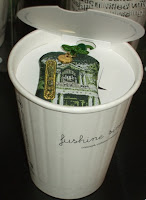
By Nancy T. Lu
Dream citadels of yore have risen this year on the golden sands of Fulong Beach about an hour and a half by train from Taipei, depicting fascinating episodes in world history.

Just like in a Hollywood movie, the story of the 300 Spartans dating back to 449-499 B.C. is being retold at the site of the 2011 Fulong International Sand Sculpture Festival.
Historical accounts told of how King Leonidas with only 300 brave Spartan warriors tried to exploit a narrow pass to gain advantage against the attacking Persian army. The Spartans locked shields and used long spears to deter the advance of the enemies for days.



Hannibal Barca led a massive army of Carthaginians in a surprise siege of a Roman stronghold during the Second Punic War (218B.C.-201 B.C.) in one of the most impressive and detailed sandy interpretations of history. War elephants figured like destructive army tanks on the move in those days. The pachyderms are shown taking a break from war duties though. The team behind the masterpiece on the theme of battle glory included the American Brian Turnbough, Portuguese Rodrigo Ferreira as well as Canadians Frederick Dobbs, Damon Langlois and Greg Jacklin.

History seems very much at the forefront of attention in a year devoted to the celebration of the founding centennial of the Republic of China on Taiwan. But so do legends and lores of different origins.

Mesopotamian myth, circa 713 B.C. gets told on the sands this summer. Sargon II was said to have built a walled city with seven gates guarded by human-headed and winged bulls. His capital came up in Dur Sharrukin or present-day Khorsabad. His grandson, Naram-Suen, appears in a bust sculpture inviting a look up close at this year’s sand sculpture show.

Different lifestyles also inspired the creation of masterpieces this year. The sand portrayal of the native Americans along with their love of nature was contributed by German participant Joseph Bakir. The Sioux tribe of the Dakotas gets to tell a tale revolving mainly around family life in a Sioux tent called teepee.

The igloo, a home built from blocks of ice by the Eskimos in the freezing North Pole, calls attention under the scorching summer sun.
The carnivorous polar bear with its thick fur and layer of fat beneath its skin is a survivor in the freezing cold of the North Pole. Its unusual presence on a sun-bathed shore is not likely to be overlooked.

An Arctic explorer comes upon an ancient giant buried in the polar ice caps in yet another intriguing creation at the sand sculpture festival. His origin, possibly tied to an ancient civilization, emerges a puzzling mystery.
Putuo Mountain in the middle of Lotus Pacific island in Zhejiang Province in China takes the spotlight in one corner of the exhibition ground. The peak floating above the clouds is known for its caves and rock formations. Ancient temples stand out in this Buddhist haven introduced by Chinese participants in the ongoing sand sculpture festival.

A legend of the sea constantly told in Taiwan centers around Goddess Matsu as a great protector of fishermen and the people on the island. Temples in many places have been built in her honor. And so this venerated deity finds her niche in the sand sculpture showcase.

Taiwan as a butterfly kingdom due to its unique ecological environment faces the threat of ruin in the light of economic progress and development. The Taiwanese team seeks to make a statement on protecting nature on the shifting sands of Fulong.

A Japanese participant dedicates his work of art to convey the Japanese people’s deep gratitude to Taiwan for being the biggest donor in the aftermath of the big earthquake and tsunami calamities in March.

Mysterious visitors from afar, courtesy of an unidentified American artist, have likewise landed in a spaceship along Fulong’s sandy stretch this year.
Forty-one sand sculpture experts from eight countries, including the United States, Canada, Germany, Portugal, Russia, Japan, China and Taiwan, were invited to transform a sandbar in Fulong, New Taipei City, into a striking showcase of sand sculpture art.
The Fulong beach tide rises and ebbs. Just like footprints on the beach, the “Golden Fulong” world built on the shifting sands overnight will be washed away by the waves towards the end of June. Another fun-filled season of sun and sea will have to wind up and give way to change. By then, the summer visitors will have returned home with cherished glimpses of romance and adventure tucked away in their memories.

Motorists can easily drive to Fulong to view the “Golden Fulong” exhibition. The hour-and-a half train ride to Fulong is another option. One-way train ticket costs only NT$83. Entrance ticket to the sand sculpture festival is priced at NT$190.




























